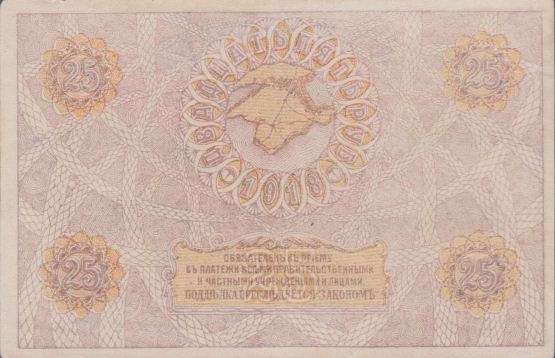 The Bank of Algeria has announced that 5 types of banknotes will be demonetized and withdrawn from circulation by 31 December 2014. The following notes are in their final year of circulation:
The Bank of Algeria has announced that 5 types of banknotes will be demonetized and withdrawn from circulation by 31 December 2014. The following notes are in their final year of circulation:
- 100 dinar (1981, P131))
- 100 dinar (1982, P134)
- 20 dinar (1983, P133)
- 200 dinar (1983, P135, seen below from my own collection)
- 10 dinar (1984, P132)
Interesting news from Standartnews.com (which got it from the Russian Pravda newspaper):
In May 2014, presidents of Russia, Kazakhstan and Belarus will sign an agreement on the establishment of the Eurasian Economic Union. Sections 9 and 11 the agreement, the draft of which is available on the official website of the Russian Ministry for Economic Development, are devoted to the joint monetary policy and financial markets. During the first stage, it is planned to set up an advisory board of the heads of central banks of participating states. The banks would be responsible for the rate of national currencies, regulation of banking and insurance activities and the harmonization of the securities market, Russian Pravda reports.
According to the Moskovsky Komsomolets newspaper that cited a source in the Eurasian Economic Commission, the document stipulates for the establishment of the Eurasian Central Bank - the supranational megaregulator of the joint currency. The Eurasian Central Bank will be subordinated to the council of presidents or prime ministers of the EEU.
The name of the new joint currency has been supposedly coordinated - altyn. The new currency is likely to be introduced not later than in 2025, although international economic sanctions against Russia may cut the process to 3-5 years.
The idea of the new joint currency belongs to Kazakh President Nursultan Nazarbayev. In 2012, the idea found support with Vladimir Putin and Dmitry Medvedev. In Russia, altyn was the word to refer to three-kopeck coins.
The President of Kazakhstan is a longtime champion of the introduction of a new supranational reserve currency. He believes the dollar is an illegal and non-competitive means of payment. Nazarbayev said earlier that the "world currency was not de jure legitimate because it was never adopted by any communities or organizations." "There is no such international law," he said.
According to Nazarbayev, "the world currency market is not a civilized market, as the system of world currency issuance is not being controlled." The Kazakh president believes that the world is moving towards a new monetary system: from "defective capitalism" to "the new capitalism that would be based on a non-defective currency - self-growing global wealth."
Altyn had been in circulation on the territory of several Russian principalities from the XV century. The coins appeared simultaneously with the beginning of the era of coinage. Interestingly, the altyn was used as a Eurasian currency immediately after it appeared. This coin was used in calculations between Russian and Asians nationals. In the XVII century, 20 altyn could buy a live calf, five - a piglet, two or three - a goose.
The name of the coin could be borrowed from the Golden Horde, where there was a coin of the same name. According to researchers, the word "altyn" comes from the Turkic numeral "alti" which means "six." Others believe that Russia simply adopted the Turkic word "gold" that sounds just like the name of the coin. However, the altyn was never coined in gold. Originally, it was made of copper; the silver altyn appeared during the times of Peter the Great.
In 1839, under Nicholas I, the altyn was revived in the form of copper coins of three kopecks. Three-kopeck copper coins were used during the Soviet era, although the coins lost the original name. The coins of this value disappeared after 1991.
1 Altyn coin from 1712 (source: Wikipedia)
 Forex.co reports that the president of Belarus, Aleksander Lukashenko, announced at a meeting that a new series of banknotes will be printed.
Forex.co reports that the president of Belarus, Aleksander Lukashenko, announced at a meeting that a new series of banknotes will be printed.
New bills resembling euros will be launched into circulation after the redenomination is over. "I know you demand a new beautiful currency because millions of Belarusian rubles are heavy to carry in wallets. The time will be ripe for it. We need to push forward with the economy. We need to achieve certain stability," Lukashenko addressed employees of the aircraft repair plant in Baranovichi. At the meeting with the staff of one of the largest factory, it emerged that newly designed banknotes had been printed and delivered to special storage facilities.
Belarus is in the process of redenomination for a third time. The Belarusian currency was redenominated on 20 August 1994, with one new unit equaling 10 old ones, and the second time it lost three zeros on 1 January 2000.
We heard these rumours before but don't expect new Belarusian banknotes before 2015.
 The Argentinian Congress has adopted a proposal for the printing of banknotes of 200, 500 and 1000 peso. Currently the highest denomination in Argentina is the 100 peso. Member of Congress Guillermo Durand Cornejo who introduced the bill pointed out that 97.1% of all circulating banknotes is either the 50 or 100 peso. Due to the rising inflation in the country there is a need for bigger notes.
The Argentinian Congress has adopted a proposal for the printing of banknotes of 200, 500 and 1000 peso. Currently the highest denomination in Argentina is the 100 peso. Member of Congress Guillermo Durand Cornejo who introduced the bill pointed out that 97.1% of all circulating banknotes is either the 50 or 100 peso. Due to the rising inflation in the country there is a need for bigger notes.
The bill also proposes the design for the new banknotes:
No word yet if these proposed banknotes will actually be printed.
 The Central Bank of Iraq has announced that a new series of banknotes will be printed, according to several newssites. The update will include new images, two added dates of the Hijri and Gregorian calendar and a signature by the Governor of the Central Bank Abdul Basit Turki Saeed. The security features will of course also be updated, like the inclusion of a security thread, color changing ink and signs to aid the visually impaired.
The Central Bank of Iraq has announced that a new series of banknotes will be printed, according to several newssites. The update will include new images, two added dates of the Hijri and Gregorian calendar and a signature by the Governor of the Central Bank Abdul Basit Turki Saeed. The security features will of course also be updated, like the inclusion of a security thread, color changing ink and signs to aid the visually impaired.
The 10,000 dinar note will get an image of the Freedom Monument in Baghdad. The 25,000 dinar note will get an agricultural theme with a plowing tractor. The old and new banknotes will circulate together.
Because the info is still sketchy and hard to translate from the original sources and because no images have been released yet, this news will be updated when more info is available.
 The Central Bank of Lebanon has issued a new commemorative note of 50,000 Lebanese pounds according to a press release by the printer, De la Rue:
The Central Bank of Lebanon has issued a new commemorative note of 50,000 Lebanese pounds according to a press release by the printer, De la Rue:
The Banque du Liban is today launching a new polymer banknote produced on Safeguard, De La Rue’s polymer substrate.
Beirut: 9 April 2014 : The new Commemorative polymer banknote is issued to celebrate the 50th anniversary of the founding of the Banque du Liban. With vibrant colours and imagery, the new note uses the latest technology as protection against counterfeiting. The clear ‘window’ area in the banknote shows an image of the Cedar of Lebanon in a bright, eye-catching blue/green ink which changes colour as the note is tilted and which can be seen from both sides of the note. The Banque is proud to be the first issuing authority in the region to use this colour changing ink in the clear window of the banknote.
De La Rue’s Sales Director Ruth Euling commented: ‘De La Rue is honoured that the Banque du Liban has selected our Safeguard polymer for their banknotes and included the SPARK ® Orbital TM feature which provides a dynamic, high impact public recognition feature. We congratulate the Banque on being the first issuer in the region to adopt the new technologies”.
Safeguard™ and Orbital are trade marks of De La Rue International Limited
SPARK® is a registered trade mark of SICPA Holdings SA
I haven't been able to find an image yet but let's hope it's a better looking note than the last commemorative issue from Lebanon.
Update: here are the images:
 In its annual report for 2013, published last week, the Central Bank of Iceland stated that because inflation has been high in Iceland it "has often been necessary to adjust the face value of banknotes and coins to a higher price level".
In its annual report for 2013, published last week, the Central Bank of Iceland stated that because inflation has been high in Iceland it "has often been necessary to adjust the face value of banknotes and coins to a higher price level".
This probably means that in the "near future" the lowest denomination banknote, the 500 krónur, will be replaced by a coin.
 According to MRI Report the Bank of Guatemala has issued an updated version of its 20 and 50 quetzales banknotes.
According to MRI Report the Bank of Guatemala has issued an updated version of its 20 and 50 quetzales banknotes.
"The Banco de Guatemala announced the release of an improved 50 quetzales note. While the design is similar to the previous ones, it has a wide segmented OVI band and a golden "coffee grain." It also shows the value in Braille. This note is printed by OberthurTechnologies. Also announced is a 20 quetzales note which has a magenta wide security thread. This one is printed by Goznak."
Pictures below taken from the information leaflets in the links above.
 The Prime Minister of Mongolia N.Altnakhuyag has denied rumours that the Central Bank of Mongolia is going to introduce a 50,000 tögrög note anytime soon:
The Prime Minister of Mongolia N.Altnakhuyag has denied rumours that the Central Bank of Mongolia is going to introduce a 50,000 tögrög note anytime soon:
"Today (April 3) I asked President of Mongolbank N.Zoljargal if it is going to introduce a 50 thousand MNT banknote and he responded, “No”. So, it is a rumor."
For now, the 20,000 tögrög note remains the highest denomination in Mongolia.
 Argentine President Cristina Fernández has presented a new 50-peso note commemorating the 32nd anniversary of the invasion of the British archipelago. Argentine forces invaded the Falkland Islands (called Las Malvinas by Argentina) on 2 April 1982 but surrendered after just over two months of fighting. A total 255 British and about 650 Argentine servicemen were killed in the fighting, along with three Falkland civilians. In March 2013, residents in the Falkland Islands voted overwhelmingly in a referendum in favour of remaining British. Just three residents out of 1,517 were against remaining British.
Argentine President Cristina Fernández has presented a new 50-peso note commemorating the 32nd anniversary of the invasion of the British archipelago. Argentine forces invaded the Falkland Islands (called Las Malvinas by Argentina) on 2 April 1982 but surrendered after just over two months of fighting. A total 255 British and about 650 Argentine servicemen were killed in the fighting, along with three Falkland civilians. In March 2013, residents in the Falkland Islands voted overwhelmingly in a referendum in favour of remaining British. Just three residents out of 1,517 were against remaining British.
On the front, it displays a map of the islands in the white and blue colours of the Argentine flag. On the back we see a gaucho who rose up against British rule in 1833. An exact issue date is unknown at this time but MRI Guide expects it to be issued "by years' end".
 As was announced last year, Poland will introduce updated banknotes in April with new security features. The news on the website of the National Bank of Poland:
As was announced last year, Poland will introduce updated banknotes in April with new security features. The news on the website of the National Bank of Poland:
On Monday 7 April 2014, Narodowy Bank Polski will start a gradual introduction of banknotes with modernized security features to circulation. The modified banknotes, with face values of 10, 20, 50 and 100 zloty, will replace worn or damaged banknotes that are withdrawn from circulation under regular operations of cash provision to commercial banks. All the banknotes currently in circulation will remain legal tender for an indefinite time.
"The main goal of modernizing the security features is to keep the security of cash transactions at the highest level over the next years. At the moment, Polish banknotes are seldom counterfeited (around 8 cases of counterfeiting against a million of banknotes in circulation), yet technological advances having taken place in the area of banknote securi-ty features over the past 20 years call for such an operation. Narodowy Bank Polski is now ready to put banknotes with modernized security features into circulation", says Marek Oles, Director of the Cash and Issue Department of NBP.
Narodowy Bank Polski has successfully completed acceptance tests of all sorters. They confirmed that the devices were ready to process the modernized banknotes. In December 2013, NBP provided professional cash handlers with the modernized banknotes, to allow them to calibrate the devices which required such adjustment (sorters, counters, deposit ATMs, dispensers, etc.) Since last year, Narodowy Bank Polski has held intensive training sessions for over 5 thousand people professionally handling cash. The Bank also cooper-ates with commercial banks and other businesses that handle cash.
"It is worth stressing that Narodowy Bank Polski will not be taking any dedicated measures to withdraw the current banknotes. The modernized banknotes will replace the damaged or worn ones, so during the first few months they will account for a mere fraction of all banknotes in circulation", adds Director Marek Oles. The graphic design of the modernized banknotes has not changed, yet the new security features will distinguish banknotes of the new issue from the old ones.
The most significant changes the public will see on the modernized banknotes are the watermark on an unprinted field, introduction of iridescent ink and an enhanced recto-verso security feature. It is worth remembering that the banknote with the face value of 200 zloty will re-main unchanged for the time being, and none of the modernized banknotes will come into circulation before 7 April 2014.
Things to keep in mind:
- in a month’s time, on 7 April, NBP will commence the provision of the mod-ernized banknotes to the commercial banks; thus, the banknotes will start their general circulation;
- the operation is of a purely technical character - the images will not change significantly; only the security features will be modified;
- the current banknotes will be legal tender indefinitely;
- the 200 zloty banknote is not due for modernisation for the time being - yet, bearing the security of cash transactions in mind, banknote modernisation is an ongoing process.
 Banco Nacional de Angola (BNA) has announced that the old kwanza notes will be replaced by the new 2012 series. The old notes will remain legal tender until 31 December 2014. After that date they can only be deposited at the Central Bank until 30 June 2015. This operation starts immediately.
Banco Nacional de Angola (BNA) has announced that the old kwanza notes will be replaced by the new 2012 series. The old notes will remain legal tender until 31 December 2014. After that date they can only be deposited at the Central Bank until 30 June 2015. This operation starts immediately.
All the images of the current series can be found here.
 The Reserve Bank of Australia has published a paper on the Next Generation Banknote Project (PDF). This project aims to enhance the security of future banknotes from the land down under. The "NGB"-series will maintain the current color schemes and the people portrayed on the notes. The new series will still be printed on polymer but the design will be enhanced: more complex, intaglio and offset printing and multiple see-through windows.
The Reserve Bank of Australia has published a paper on the Next Generation Banknote Project (PDF). This project aims to enhance the security of future banknotes from the land down under. The "NGB"-series will maintain the current color schemes and the people portrayed on the notes. The new series will still be printed on polymer but the design will be enhanced: more complex, intaglio and offset printing and multiple see-through windows.
No date has been set but the new series will be issued in the coming years.

 Talks between St. Maarten and Curacao about a common currency have been going on for years now. The lack of decision has now led to a shortage of coins on both islands. The Central Bank of Curacao and St. Maarten (CBCS) has indicated that the problems will be solved at the end of May or the beginning of June.
Talks between St. Maarten and Curacao about a common currency have been going on for years now. The lack of decision has now led to a shortage of coins on both islands. The Central Bank of Curacao and St. Maarten (CBCS) has indicated that the problems will be solved at the end of May or the beginning of June.
Curacao and St. Maarten were part of the Netherlands Antilles until 10 October 2010. They continued as autonomous countries within the Kingdom of the Netherlands (for an explanation of the difficult organisation of the Kingdom of the Netherlands I advice you to watch this cool video). Part of the decision back then was also to introduce a common currency: the Caribbean Guilder. Nothing has happened since because of disagreements between the two countries. St. Maarten in the meantime is thinking about adopting the US dollar as its currency. In the meantime the Netherlands Antillean guilder will still be used:
 RT.com reports: "The Crimean parliament has announced the Russian ruble will become the second official currency of Crimea and will be circulating alongside the Ukranian hryvnia until it is withdrawn in 2016. The decision marks the first step in the peninsula’s economic integration with Russia, after Crimea’s citizens overwhelmingly voted for joining Russia in Sunday's referendum."
RT.com reports: "The Crimean parliament has announced the Russian ruble will become the second official currency of Crimea and will be circulating alongside the Ukranian hryvnia until it is withdrawn in 2016. The decision marks the first step in the peninsula’s economic integration with Russia, after Crimea’s citizens overwhelmingly voted for joining Russia in Sunday's referendum."
There is of course still a lot of debate whether the referendum was illegal or not but Crimea (and Russia for that matter) doesn't seem to have any doubts and moves forwards towards a fait accomplie.
What most people don't know is that Crimea once had its own currency and banknotes. A nice example can be seen below on this 25 ruble banknote from 1918 (S371) with a map of Crimea on the back.
« Vorige Pagina |
Toon berichten 676-690 van 937 |
Volgende Pagina »
 The Bank of Algeria has announced that 5 types of banknotes will be demonetized and withdrawn from circulation by 31 December 2014. The following notes are in their final year of circulation:
The Bank of Algeria has announced that 5 types of banknotes will be demonetized and withdrawn from circulation by 31 December 2014. The following notes are in their final year of circulation: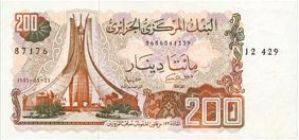
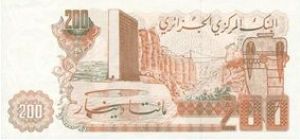
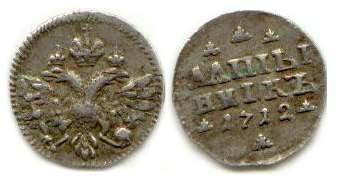
 Forex.co
Forex.co  The Argentinian Congress has adopted a
The Argentinian Congress has adopted a  The
The  The
The 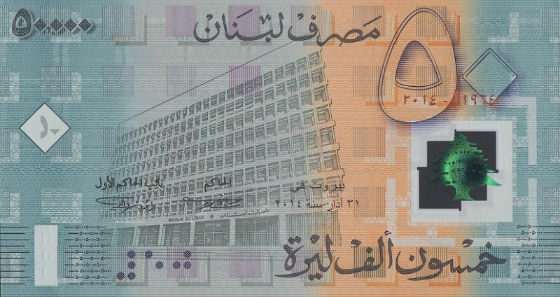
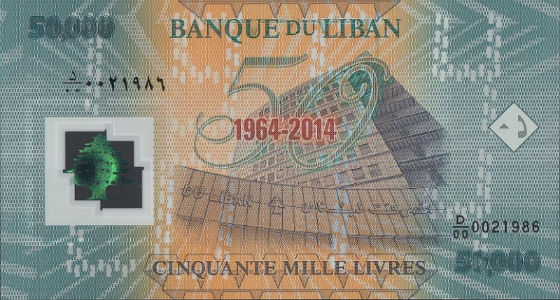

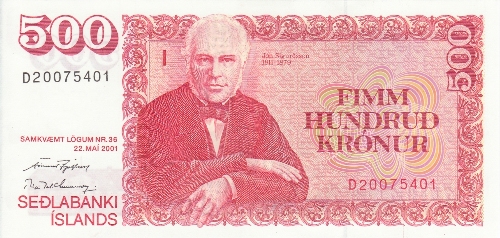
 According to
According to 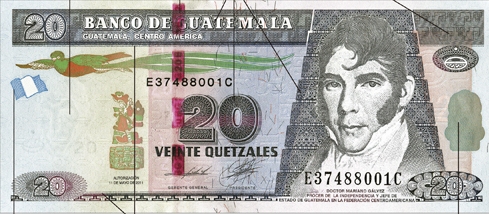
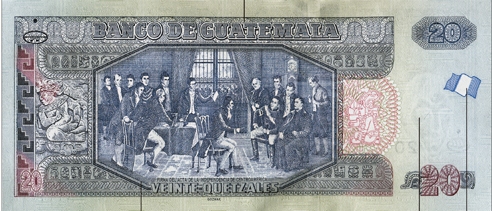
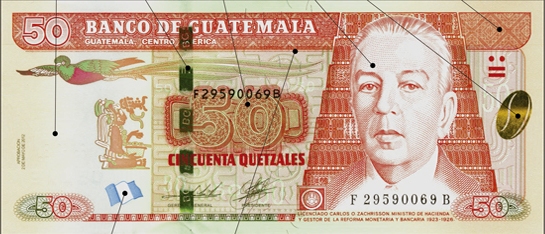
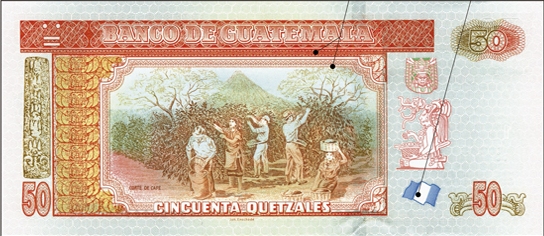
 The Prime Minister of Mongolia
The Prime Minister of Mongolia 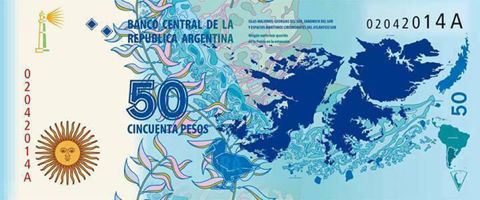
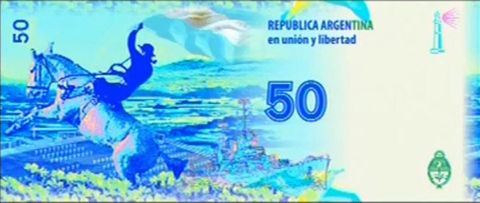
 As was
As was 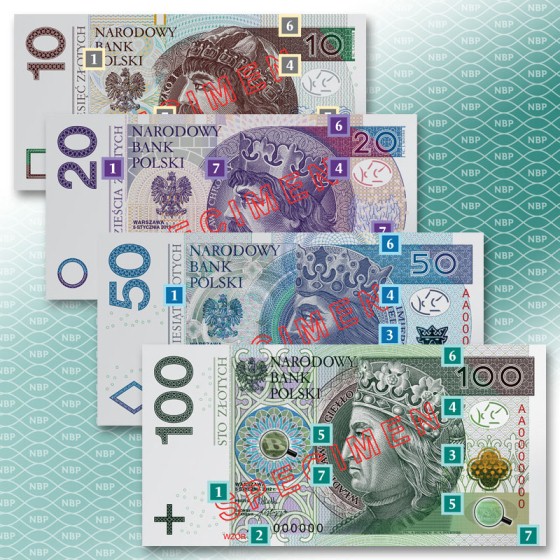

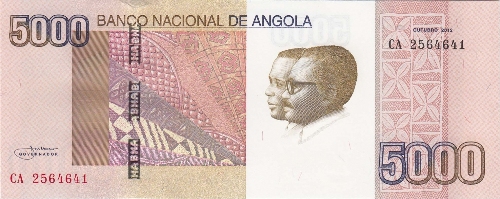
 The
The 
 Talks between St. Maarten and Curacao about a common currency have been going on for years now. The lack of decision has now led to a shortage of coins on both islands. The
Talks between St. Maarten and Curacao about a common currency have been going on for years now. The lack of decision has now led to a shortage of coins on both islands. The 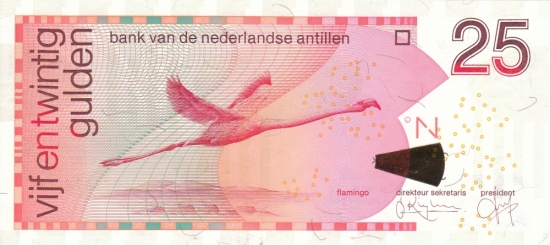
 RT.com
RT.com 